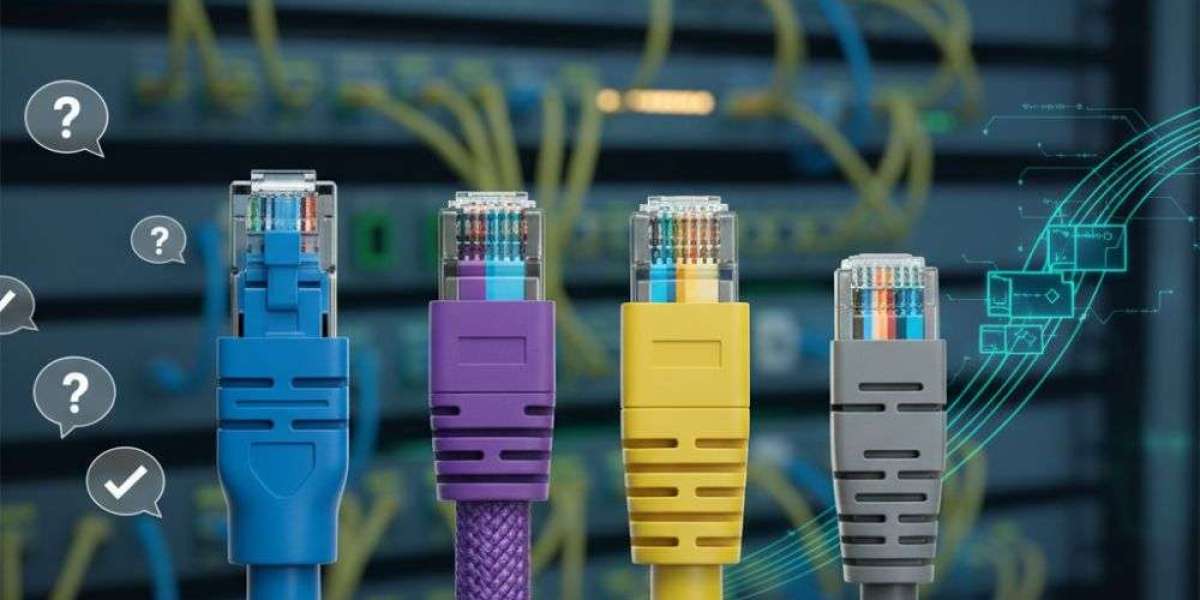You've probably seen them everywhere - those plastic cables running along walls, plugged into your router, or connecting computers in an office. But what exactly is a network cable, and why do we need it? Let's break it down in simple terms.
Understanding Network Cables
A network cable is a physical wire that connects devices to share data and communicate with each other. Think of it as a bridge that lets your computer talk to your router, or allows two computers to exchange files. Without these cables, many of our internet connections and computer networks wouldn't work.
The main job of a network cable is to carry information from one device to another. When you send an email or load a website, data travels through these cables at lightning speed. They're the hidden heroes of our digital world.
Why Do We Need Network Cables?
You might wonder, "Don't we have WiFi for that?" Yes, we do, but network cables offer something WiFi can't always provide - reliability and speed.
When you use a network cable, your connection stays stable. You won't experience the drops or slowdowns that sometimes happen with wireless connections. This makes cables perfect for gaming, video calls, or downloading large files. Many offices still rely heavily on network cables because they need fast, dependable connections for their daily work.
Types of Network Cables
Not all network cables are the same. Let's look at the most common types you'll come across:
Ethernet Cables
Ethernet cables are the most popular type of network cable. You'll find them in homes, schools, and businesses. They come in different categories, like Cat5, Cat6, and Cat7. Each category handles different speeds and distances.
Cat5 cables are older and slower, while Cat6 and Cat7 cables can handle much faster internet speeds. If you're setting up a new network today, you'll probably want to go with Cat6 or higher.
Fiber Optic Cables
These cables use light instead of electricity to send data. They're incredibly fast and can carry information over very long distances. Internet service providers often use fiber optic cables to deliver high-speed internet to neighborhoods.
While fiber optic cables are amazing, they cost more than regular network cables. Most home users stick with standard Ethernet cables for their needs.
Coaxial Cables
You might recognize these from cable TV setups. Coaxial cables have a thick, round shape and can carry both internet and television signals. Some internet providers still use them to connect homes to their network.
How Does a Network Cable Work?
Inside a typical network cable, you'll find several thin copper wires twisted together in pairs. These twisted pairs help reduce interference and keep your signal strong.
When you send data through a network cable, it converts into electrical signals that zip through these wires. At the other end, your device receives these signals and converts them back into the information you need - whether that's a webpage, a video, or a document.
The twisting pattern isn't random. Engineers design it carefully to prevent the wires from interfering with each other. This clever design helps your network cable deliver fast, clean data transfers.
Choosing the Right Network Cable
When you need to buy a network cable, consider these factors:
Speed Requirements: How fast is your internet? If you have gigabit internet, you need a cable that can handle those speeds. A Cat6 network cable works great for most modern home networks.
Distance: Network cables have length limits. Standard Ethernet cables work well up to about 100 meters. If you need to cover more distance, you might need special equipment or a different type of cable.
Environment: Will your cable run outdoors or in harsh conditions? Some network cables have extra protection against weather and physical damage.
Budget: Higher category cables cost more, but they offer better performance. Balance your needs with your budget.
Setting Up Your Network Cable
Using a network cable is straightforward. You simply plug one end into your device and the other end into your router or switch. The connection usually happens automatically.
Most network cables have clips that click into place when you insert them. You'll hear or feel a small snap. To remove the cable, press down on the clip and pull gently.
Make sure you don't bend your network cable too sharply or pinch it in doors. These actions can damage the internal wires and slow down your connection.
Common Problems and Solutions
Sometimes network cables stop working properly. Here are some issues you might face:
If your internet cuts out randomly, check if the cable is fully plugged in. A loose connection causes many problems. Also, look for any visible damage to the cable itself.
Slow speeds might mean you're using an old network cable that can't handle your internet plan. Upgrading to a newer cable often solves this issue.
If your cable stops working entirely, try a different cable to see if that's really the problem. Sometimes the issue is with your device or router instead.
The Future of Network Cables
Even as wireless technology improves, network cables remain important. New versions keep getting faster and more efficient. The latest cables can handle speeds that seemed impossible just a few years ago.
Data centers, gaming setups, and professional environments will likely rely on network cables for many years to come. They offer the rock-solid performance that wireless connections still struggle to match consistently.
Final Thoughts
A network cable might seem like a simple piece of equipment, but it plays a vital role in keeping us connected. Whether you're working from home, gaming online, or just browsing the web, there's a good chance a network cable is helping make it happen.
Understanding what network cables do and how to choose the right one helps you get the most out of your internet connection. Next time you see that cable running to your router, you'll know exactly what important job it's doing behind the scenes.
Remember, a good quality network cable is an investment in better, more reliable internet. It's one of the easiest upgrades you can make to improve your online experience.
Sources: https://adaptiveblogs.com/how-to-choose-the-right-networking-cables-for-your-needs/
https://telegra.ph/Which-is-Better-CAT6-or-CAT7-10-30



